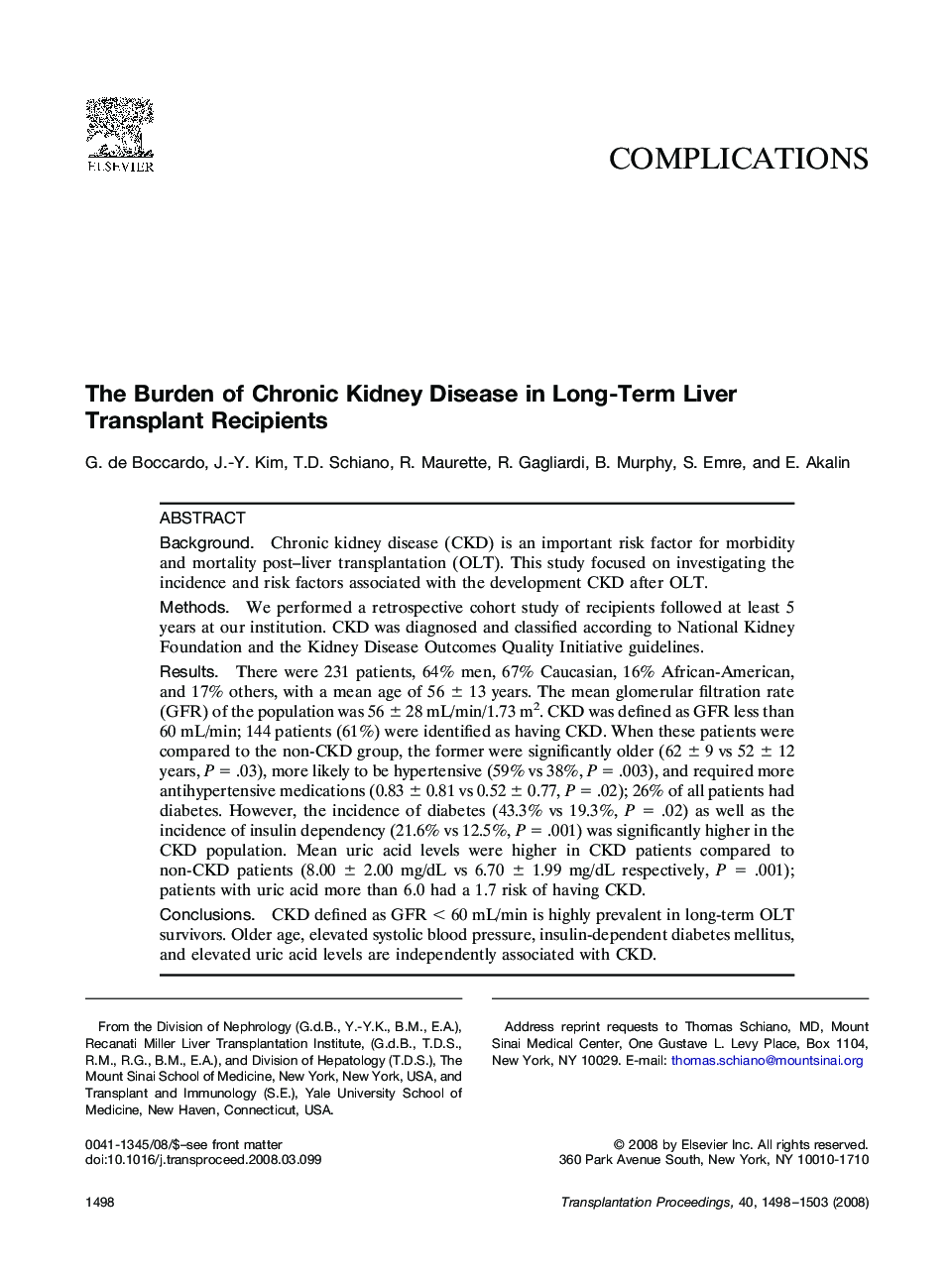| Article ID | Journal | Published Year | Pages | File Type |
|---|---|---|---|---|
| 4258249 | Transplantation Proceedings | 2008 | 6 Pages |
BackgroundChronic kidney disease (CKD) is an important risk factor for morbidity and mortality post–liver transplantation (OLT). This study focused on investigating the incidence and risk factors associated with the development CKD after OLT.MethodsWe performed a retrospective cohort study of recipients followed at least 5 years at our institution. CKD was diagnosed and classified according to National Kidney Foundation and the Kidney Disease Outcomes Quality Initiative guidelines.ResultsThere were 231 patients, 64% men, 67% Caucasian, 16% African-American, and 17% others, with a mean age of 56 ± 13 years. The mean glomerular filtration rate (GFR) of the population was 56 ± 28 mL/min/1.73 m2. CKD was defined as GFR less than 60 mL/min; 144 patients (61%) were identified as having CKD. When these patients were compared to the non-CKD group, the former were significantly older (62 ± 9 vs 52 ± 12 years, P = .03), more likely to be hypertensive (59% vs 38%, P = .003), and required more antihypertensive medications (0.83 ± 0.81 vs 0.52 ± 0.77, P = .02); 26% of all patients had diabetes. However, the incidence of diabetes (43.3% vs 19.3%, P = .02) as well as the incidence of insulin dependency (21.6% vs 12.5%, P = .001) was significantly higher in the CKD population. Mean uric acid levels were higher in CKD patients compared to non-CKD patients (8.00 ± 2.00 mg/dL vs 6.70 ± 1.99 mg/dL respectively, P = .001); patients with uric acid more than 6.0 had a 1.7 risk of having CKD.ConclusionsCKD defined as GFR < 60 mL/min is highly prevalent in long-term OLT survivors. Older age, elevated systolic blood pressure, insulin-dependent diabetes mellitus, and elevated uric acid levels are independently associated with CKD.
